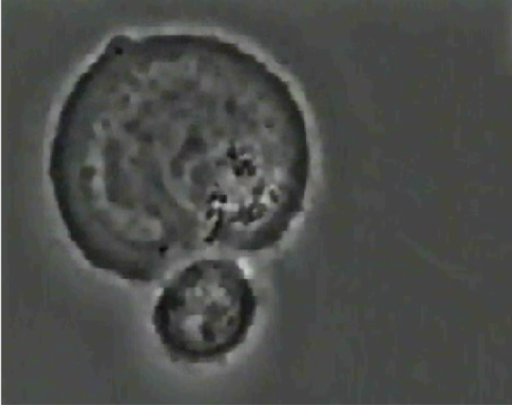1.4 Cytotoxicity
When a cytotoxic T cell recognises a virus-infected cell, it can signal to it to induce apoptosis. Video 2 below shows a cytotoxic T cell engaging a target cell infected with the influenza virus. As you can see, a cytotoxic T cell (the smaller cell) binds to an influenza-infected target cell. The T cell has granules containing mediators that damage the membrane of the target cell and activate apoptosis. If the T cell recognises the target these granule associated mediators are released into the space between the cells. Apoptosis is seen as membrane blebbing (blobs) and condensation of the nucleus.

The mechanisms by which the T cell induces apoptosis are beyond the scope of this course, but can be summarised as follows:
- Release of a molecule, perforin, which punches holes in the plasma membrane of the target cell.
- Release of granule-associated enzymes, which enter the target cell through the holes created, and activate the cell’s endogenous systems, for inducing apoptosis.
- Release of cytokines that bind to receptors on the target cell, that activate different endogenous pathways to apoptosis.
As you can see, the T cell does not exactly kill the infected target cell, but causes it to die by suicide.
